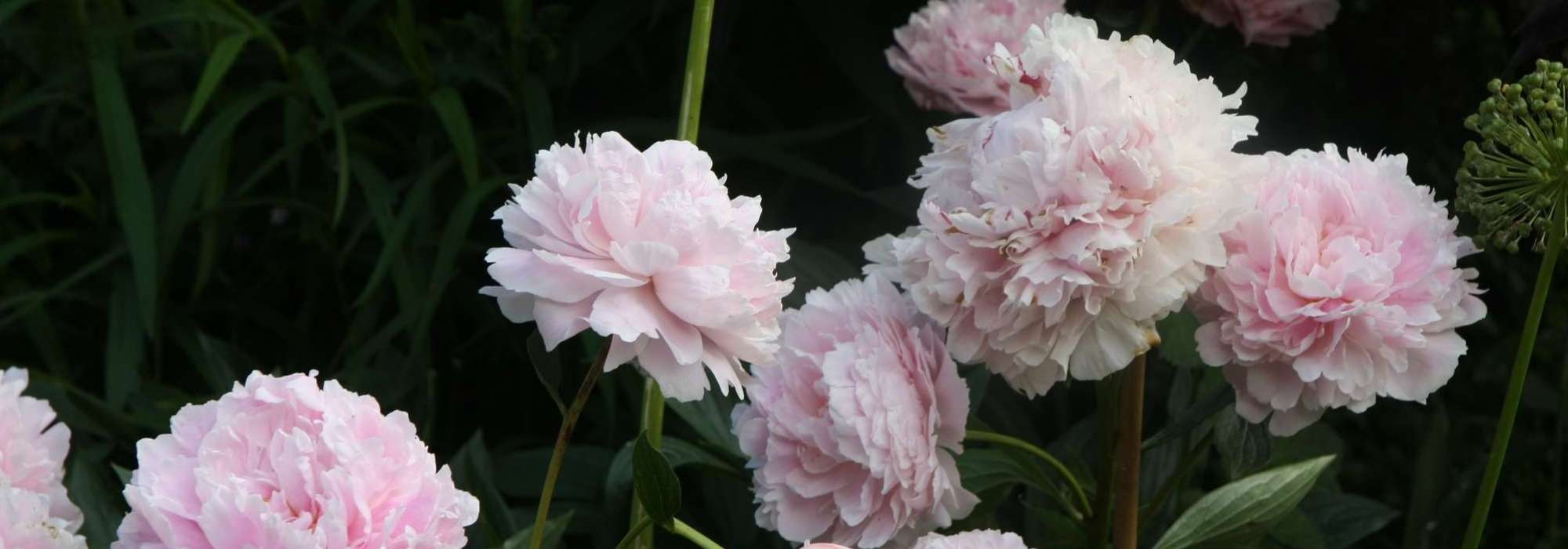
Peonies: planting, pruning, and caring for
Contents
Peony, in a nutshell
- Paeonies are divided into two categories: hardy herbaceous perennials that die back in winter and shrubby types with large, often fragrant flowers, which are hardy but whose flowering can sometimes be affected by late frosts.
- They are plants that take a while to establish, sometimes capricious in terms of flowering, but can live for several decades.
- Over the years, the clump expands without needing to be divided or pruned for the shrubby paeony and produces up to 60 flowers with a diameter sometimes reaching 25-30 cm, in May-June.
- Paeonies prefer deep, rich soils, whether acidic or calcareous, heavy or humus-bearing, but well-drained.
A word from our expert
Since the enormous, frilly flowers to the simple and modest corollas, illuminated by a bouquet of golden-yellow stamens, the charm of peonies is undeniable. Even a novice can recognise a peony at first glance with its broadly cut leaves and exceptionally large flowers in shades of pink, white, red, or salmon. It’s no wonder they are nicknamed “the queen of gardens”!
The genus is being renewed with new creations featuring sturdier stems, unprecedented shades, brighter and even fluorescent, foliage that lasts longer, and an extended flowering period spanning from mid-April to mid-June, along with greater ease of cultivation.
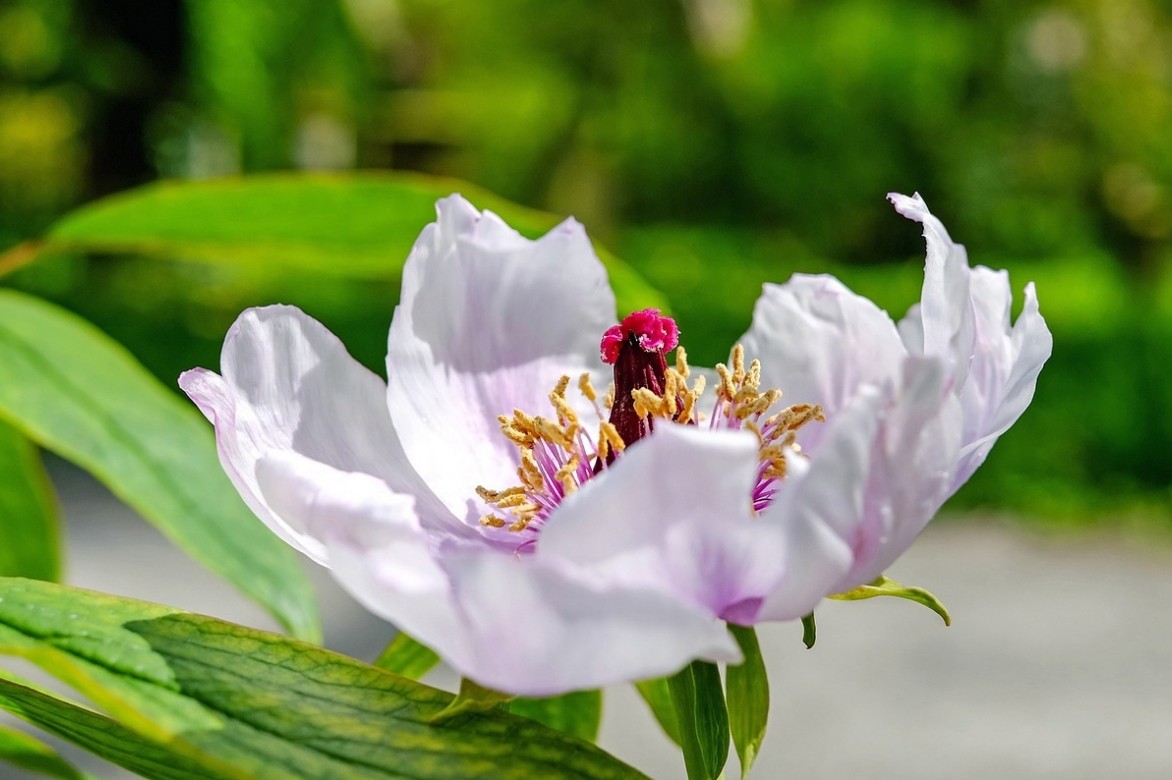
Today, we can indeed distinguish three categories of peonies:
- herbaceous, very hardy and disappearing in winter,
- shrubby, gradually forming a bush 1 to 2-3 m high, with large flowers,
- Itoh peonies , hybrids between a herbaceous peony and a shrubby peony. The latter behave like very hardy perennials that disappear in winter and, like the shrubby types, boast large flowers in quite unique shades of peach, cinnamon, apricot, or canary, with finely cut leaves supported by sturdy stems that do not require staking.
In the garden, peonies prefer open but not overly hot spots and are extremely hardy, particularly the herbaceous peony, which can withstand temperatures below -50°C! It prefers heavy, rich, cool but well-drained and slightly calcareous soils, while the shrubby peony favours humus-rich, light, rich, and cool soils. Itoh hybrids are also very hardy, simply wary of waterlogged soils, appreciate partial shade, and possess robust stems that do not bend under the weight of the flowers.
Description and Botany
Botanical data
- Latin name Paeonia
- Family Paeonaceae
- Common name Shrub peony, herbaceous peony
- Flowering between April and June depending on the variety
- Height between 0.50 and 3 m
- Exposure not too hot sun to partial shade
- Soil type any rich, deep, well-drained soil, even calcareous
- Hardiness Excellent (-15 to -50 °C)
The genus Paeonia, comprising 33 deciduous species, is predominantly found in temperate Eurasia, with the exception of two species native to North America. Peonies, once classified among the Ranunculaceae family—which includes anemones and buttercups—are now recognised as forming their own family, the Paeonaceae. Among them, Chinese peonies (Paeonia lactiflora) stand out for their significant contribution to the diversity of herbaceous cultivars, while the varieties suffruticosa, delavayi, and lutea have enriched the range of shrub peonies.
These plants are characterised by a woody stump with fleshy, robust roots, ensuring remarkable longevity, sometimes lasting centuries. Their deciduous foliage consists of dentate or lobed leaflets, providing particular elegance to the shrub species, and some, like Paeonia tenuifolia, boast finely dissected leaves. In spring, peonies announce their awakening with the emergence of large red buds, whether from the ground for herbaceous types or on the branches for shrubs, revealing initially mahogany foliage that unfurls into vibrant green.
In autumn, herbaceous peonies can offer a spectacle of purple, ochre, and bronze colours, especially after a sunny and moderately dry summer. However, it is advisable to accompany these garden queens with other flowers to maintain aesthetic interest until the leaves fall in September.
The solitary and prominent flower buds at the end of the stems herald a flowering period that perfumes the surrounding air for about fifteen days, and even up to a month for hybrids in the Itoh range. Each flower, at its full bloom, lasts only one to two days, offering a fleeting moment of pure beauty.
The medicinal peonies, scientifically known as Paeonia officinalis, are a European species distinguished by their simple, bright red flowers. Highly fragrant, these flowers have more than five rounded petals, reminiscent of the large flowers of wild roses with their short yellow stamens. In double-flowered varieties, these stamens are replaced by undulating filaments, creating a visually captivating display. Medicinal peonies conceal between two and five large ovaries, which, after fertilisation, give rise to stout, hairy follicles. It is important to note the toxicity of the seeds of these plants, which are large enough to attract attention.
The pollination of peonies, essential for their reproduction, greatly benefits from the activity of bees. However, many cultivars, particularly double or triple-flowered peonies, present an impressive bouquet of transformed stamens, either into frizzy filaments in varieties like Paeonia lactiflora ‘Bowl of Beauty’, or into additional petals in specimens such as Paeonia officinalis ‘Rubra Plena’ or Paeonia lactiflora ‘Felix Crousse’. These transformations offer a palette of varied colours, ranging from delicate gradients to distinctive purplish touches, while presenting flower sizes from 5 to 30 cm in diameter. Some, particularly among shrub peonies, can become so heavy that they lean or even flop onto the ground, reminiscent of the morphological diversity of Dahlias.
The floral blooming of peonies requires patience and time, often taking two to three years after planting to establish a solid root system. Once well-rooted, peonies can bloom for a century, offering up to 60 flowers per plant. Shrub varieties require an even longer period, about seven years, to fully reveal their splendour, which explains the increase in price with the age of the plants. When purchasing, it is advisable to pay attention to the size of the stump and the number of eyes or branches, as these are indicators of the age and maturity of the plant.
Cut peonies, in particular, make magnificent additions to bouquets, pairing perfectly with lilacs and campanulas, and should ideally be harvested in the morning at the coloured bud stage.
Beyond their beauty, medicinal peonies possess medicinal virtues, a legacy of their Greek name “Paeonia,” meaning “healing.” This name may also derive from Paeon, a physician from ancient Greece. Pliny the Elder already regarded the peony as the oldest cultivated flower, a testament to its historical and cultural significance.

Some peony flowers: Paeonia lactiflora ‘Black Beauty’, Paeonia itoh ‘Julia Rose’, Paeonia lactiflora ‘Bowl of Beauty’ and Paeonia delavayi lutea
Read also
Planting peoniesThe main varieties of Peony
Herbaceous Peonies
Although the peony genus comprises over 30 species, most cultivars are derived from Paeonia lactiflora. This species boasts fragrant flowers in May-June, with diameters ranging from 7 to 20 cm. Staking the stems becomes necessary to support the large flower pom-poms. Over the years, you will be surprised by the size of the clump, which always returns more lush.
Japanese-type peonies are valued for their flowers with simple corollas crowned with numerous stamens. They create very lovely scenes at the foot of flowering plum trees. Among the most well-known are ‘Bowl of Beauty’ with pink flowers and a light yellow centre, and ‘Kimo-Kimo’ with carmine flowers tinged with crimson.
Discover our selection of the most beautiful herbaceous peonies.
Shrub Peonies
Paeonia suffruticosa, delavayi, lutea, x lemoinei generally form deciduous shrubs 1 to 2 m tall, with a stout and well-branched silhouette that is as wide as it is tall, often spreading, sometimes sprawling. Slow-growing, flowering may not occur until 2 or 3 years after planting, but the shrub can live for 50 years. It typically flowers in April-May, preceding that of herbaceous peonies. The flowers, which can be simple, semi-double, double, or even globular, form cups measuring 15 to 30 cm in diameter.
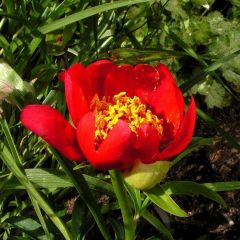
Paeonia lobata Sunshine
- Flowering time May, June
- Height at maturity 85 cm
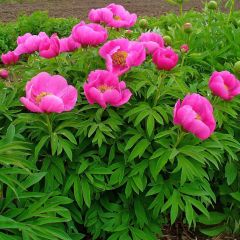
Paeonia officinalis Mollis
- Flowering time July, August
- Height at maturity 45 cm

Paeonia tenuifolia
- Flowering time May
- Height at maturity 40 cm
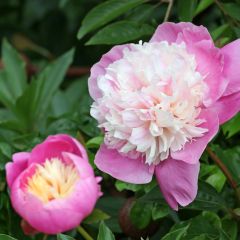
Paeonia lactiflora Bowl of Beauty
- Flowering time June, July
- Height at maturity 90 cm
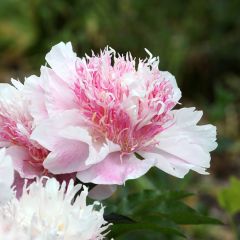
Paeonia lactiflora Do Tell
- Flowering time June
- Height at maturity 80 cm

Paeonia lactiflora Inspecteur Lavergne
- Flowering time June, July
- Height at maturity 80 cm
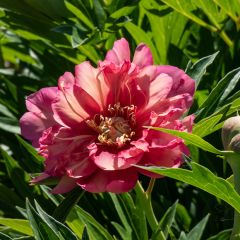
Paeonia Itoh Julia Rose
- Flowering time June, July
- Height at maturity 75 cm
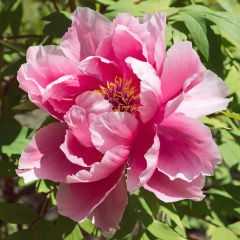
Paeonia suffruticosa Pink - Tree Peony
- Flowering time May, June
- Height at maturity 1,50 m
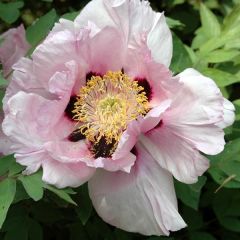
Paeonia suffruticosa Lilac - Tree Peony
- Flowering time June, July
- Height at maturity 1,50 m
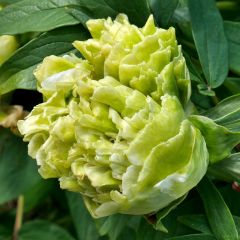
Paeonia suffruticosa Lu Mu Ying Yu - Tree Peony
- Flowering time May, June
- Height at maturity 1,50 m
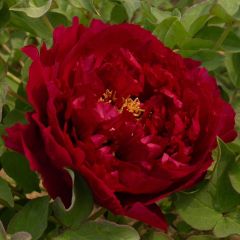
Paeonia suffruticosa Wu Jin Yao Hui - Tree Peony
- Flowering time May
- Height at maturity 1,50 m
Discover other Paeonia - Peonies
View all →Available in 0 sizes
Available in 2 sizes
Available in 2 sizes
Available in 2 sizes
Available in 2 sizes
Available in 2 sizes
Available in 2 sizes
Available in 2 sizes
Available in 2 sizes
Available in 3 sizes
Planting Peonies
Where to Plant Peonies?
Peonies do not like to be moved, so it is important to choose the best possible location to showcase them and ensure they do not suffer from excess moisture or competition from other plants. Remember, you are planting for the next two generations to come!
- Herbaceous peonies require full sun or partial shade with heavy (clay) soil that is rich, well-drained, yet remains cool in summer, neutral, slightly acidic, or calcareous (ideal pH between 6 and 7). Growth is slow, but flowering is more beautiful than in dry soil. Very sandy, well-draining soil produces a lot of foliage with few flowers. You can lighten overly wet soils in winter by adding some compost or leaf mould or by planting on a mound.
Itoh peonies appreciate partially shaded locations such as the edge of a grove or the shelter of a hedge and also require rich, cool, deep, and well-drained soil.
- Place shrub peonies in a warm location, facing west, sheltered from severe frosts and cold winds. Choose a sunny spot that is not scorching to slightly shaded (4 to 6 hours of sun/day). Flower buds and young leaves are sensitive to late frosts.
Shrub peonies prefer a rich, humus-bearing, deep, cool, and well-drained soil and tolerate calcareous conditions well. They are averse to very heavy, wet soils in winter. Slow to grow in the first few years, shrub peonies develop a powerful and deep root system and produce few branches; it is only after 3-4, sometimes 5 years of cultivation that branching thickens and flowering becomes spectacular. Mature plants do not like to be moved.
To learn more, read Planting Peonies: Where, When, and How and How to Have Beautiful Peonies in the Garden?
When to Plant?
Plant herbaceous peonies preferably in autumn to allow them time to settle in.
For shrub peonies, spring planting is preferable, especially if winters are harsh.
How to Plant?
This plant can be quite temperamental and may take a long time to flower.
- Dig a hole 40 to 50 cm deep.
To check if your soil drains sufficiently, dig a hole 30 cm deep and 20 cm wide and fill it with water. After an hour, the water should be completely drained.
- Lay a 10 cm thick layer of gravel and lighten the soil with coarse sand if necessary.
- Add decomposed manure or dried blood to the planting hole to stimulate flowering.
For herbaceous peonies, position the crown of roots (claw) no more than 3 cm deep and spaced 60 cm to 1 m apart.
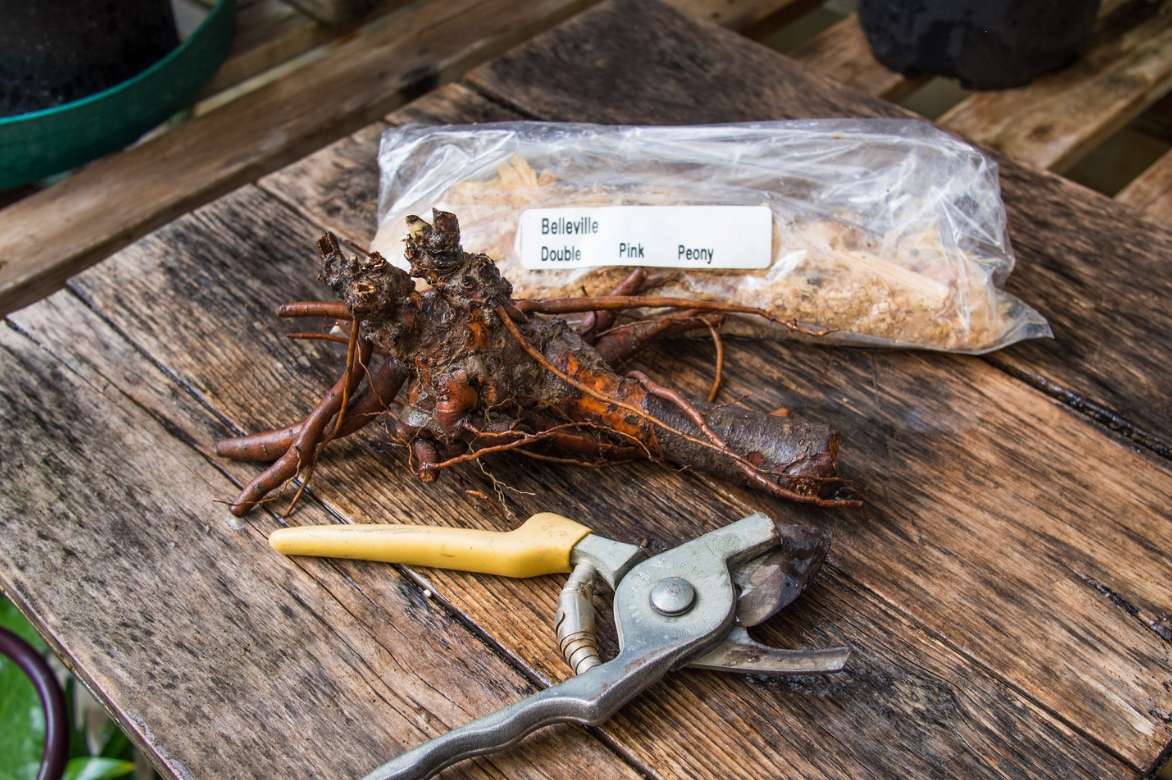
Roots of herbaceous peony (photo F. D. Richards – Flickr)
For shrub peonies, do not hesitate to bury the grafting point 10 cm deep so that the graft produces its own roots. Indeed, the grafting system on herbaceous peony reduces the longevity of the shrub peony. On the other hand, planting too shallowly causes the rootstock to sprout. However, maintain the same level as the substrate if your plant is sold in a container.
- Replace the soil and lightly compact it.
- Insert supports such as hazel branches to support the large flowers and mark the location.
- Water generously.
- Avoid mulching with organic waste to prevent disease transmission. Instead, install low-competition groundcover plants such as hardy geranium or sedum.
Read also
plant a tree peonyEntretien
- Apply decomposed manure or dried blood each autumn 15 cm from the base. Avoid fresh manures!
- If an exceptional frost affects the branches of the shrub peony, and if you have taken care to bury the grafting point, cutting the branches back to the ground in April allows for the reconstitution of the branches within a year.
- In the first few years, water the peony during dry spells, especially in spring, before flowering.
- Cut faded flowers to prevent the plant from exhausting itself with seed production.
- In general, herbaceous peonies do not require clump division, unless their flowering decreases. Shrub peonies should not be pruned or only minimally (thin and crossing branches); to learn more, read our article “How to prune shrub peonies?”
- Peonies are very little susceptible to diseases except in cases of excessive soil moisture (white rot) or air humidity (grey rot, rust), particularly in herbaceous peonies. Cut back diseased parts to healthy tissue, spray with 2% Bordeaux mixture or horsetail decoction as a preventive measure, and do not leave any plant debris at the base. Golden beetles sometimes eat the flowers without serious consequences. Also read our topic: diseases and pests of shrub peonies.
→ A shrub peony that flowers little or not at all? Read our tips in: My shrub peony is not flowering. Why?
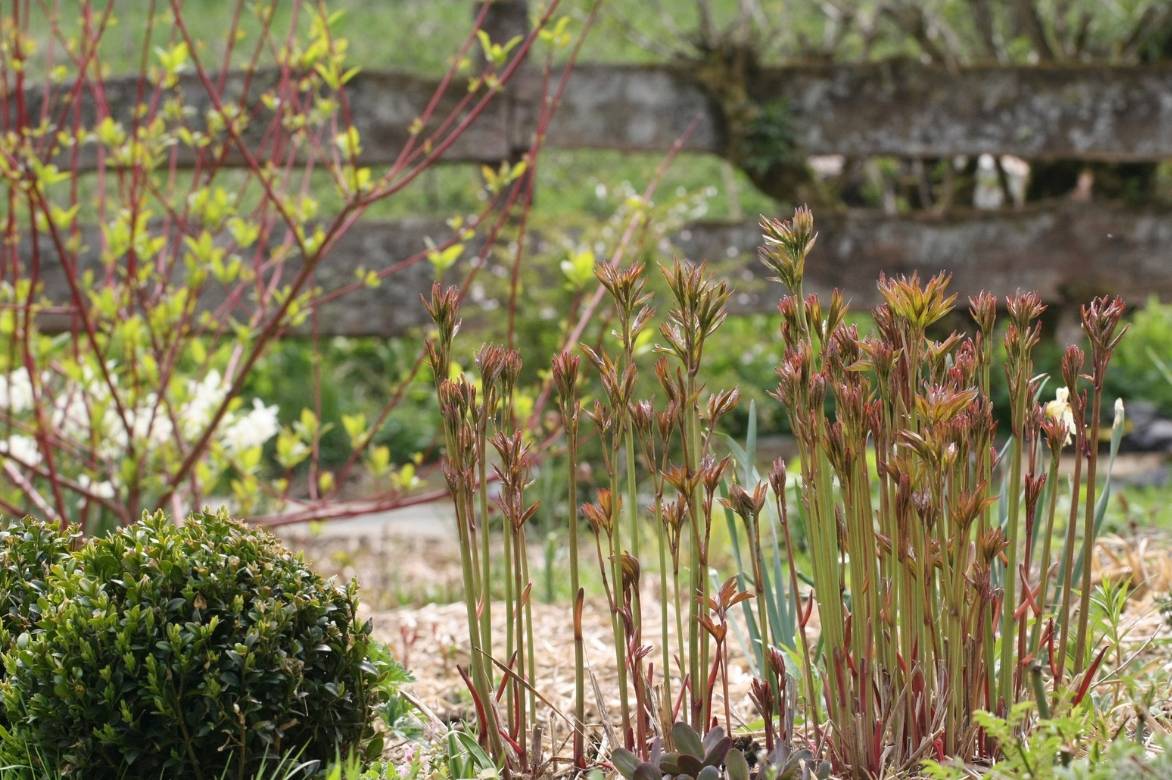 Clump of herbaceous peony in early spring
Clump of herbaceous peony in early spring
Multiplication: dividing peonies
Tree peonies are generally grafted onto herbaceous peony roots as propagation by cuttings is not easy. This is a specialist task. This method involves a cultivation period of 2 to 3 years in a nursery, which explains their high cost.
Clump division is possible with herbaceous peonies and must be done if you move the plant, or you risk not seeing it bloom again. Proceed in autumn or early spring.
Clump Division
- Remove the entire clump without damaging the roots using a forked spade.
- Divide the clump with a sharp knife, ensuring to keep 3 to 5 roots and 3 to 5 buds per division.
- Replant with the buds placed no more than 3 cm from the surface.
→ Learn more in our tutorials: How to divide an herbaceous peony? and How to propagate the tree peony?
Uses and Associations
Peonies were once among those plants that formed the backbone of a garden. Every garden, from the most modest to the most elaborate, proudly displayed clumps of fragrant flowers in spring, making their way into the home, accompanying lilacs and blue campanulas in every bouquet. Japanese peonies integrate perfectly into a mixed border alongside timeless perennials such as columbines, delphiniums, campanulas, irises, alyssums, carnations, foxgloves, lupins, or even Christmas roses, or ferns when the area is partially shaded. Just ensure they have enough space so they are not competing with one another. Only long-term pot cultivation is not recommended, as their needs will not be met. Over time, the peony becomes majestic, multiplying and flowering more abundantly. They can also be planted at the base of a standard rose. When planted in isolation, place 3 plants spaced 60 to 100 cm apart for a spectacular effect.
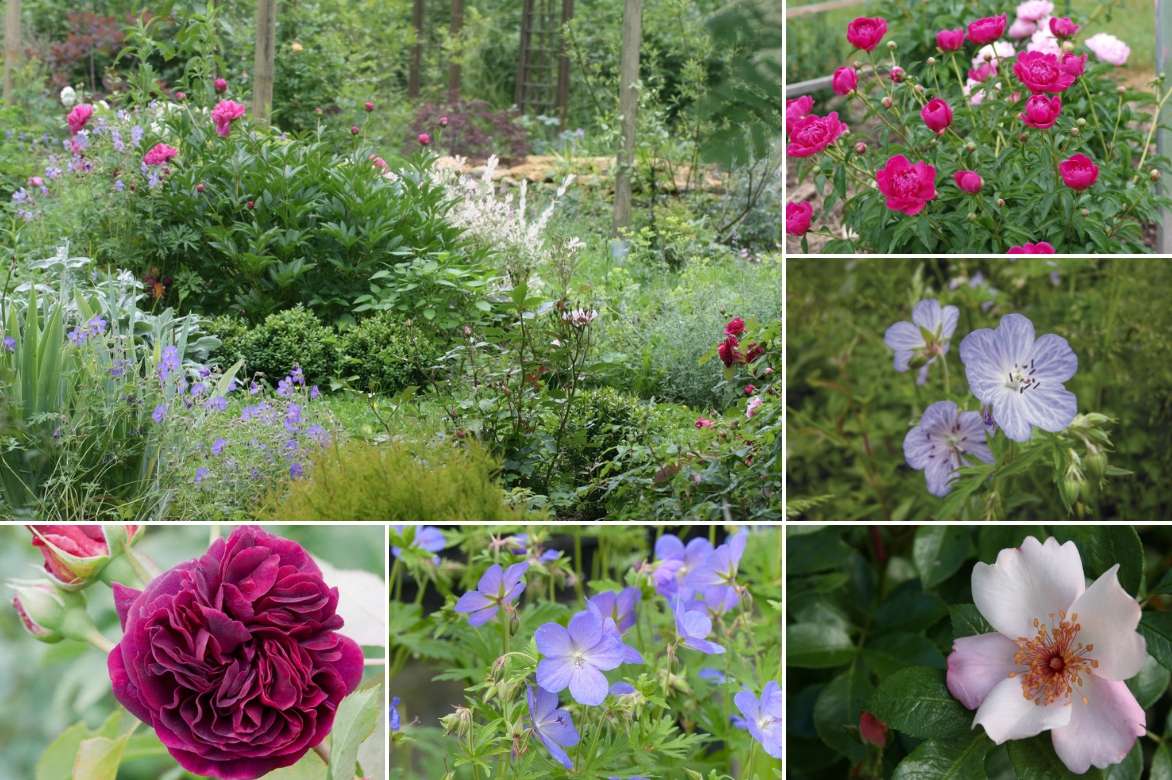
An example of association: Paeonia lactiflora ‘Félix Crousse’, Geranium pratense ‘Mrs Kendall Clarke’, Rose ‘Astronomia’, Geranium ‘Johnson’s Blue’, and Rose ‘Munstead Wood’
The Itoh peony thrives in partially shaded locations such as the edge of a grove or the shelter of a hedge. It is often planted in groups of 3 in a shrub or perennial bed.
Botanical peonies (officinalis, tenuifolia, etc.) that enjoy warm situations can be placed at the top of a large rockery, even limestone, or in a bed or isolated.
Plant the shrub peony in isolation or framed by other plants depending on the exposure, alongside ferns, rhododendrons, and hydrangeas in partial shade, or with irises, nepeta, foxgloves, and daisies in a sunny area. Consider pairing with plants that will take over the flowering in summer, such as Phlox paniculata, dahlias, or asters.
Gwenaëlle offers you more beautiful association ideas in: Associating shrub peonies in a bed.
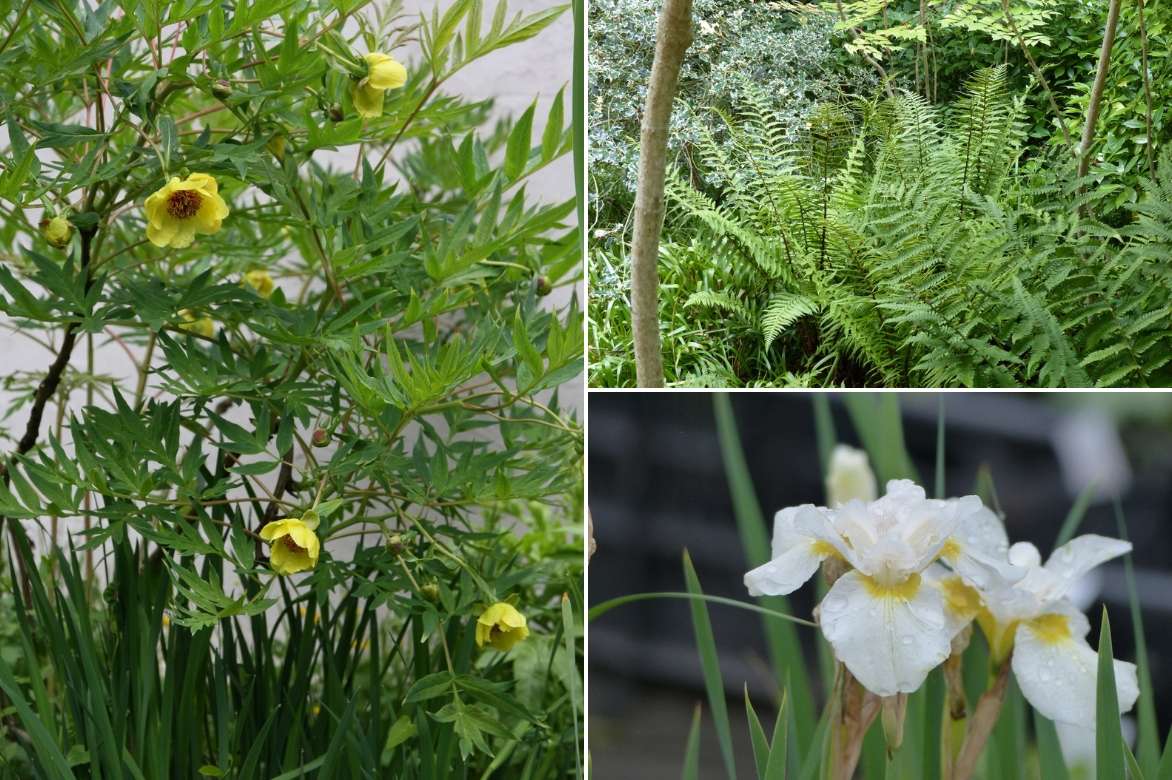
An example of association in light shade and cool soil: Paeonia delavayi lutea (or a double-flowered variety like ‘Alice Harding’), Dryopteris affinis, and Iris sibirica ‘Butter and Sugar’ (or a similar variety like ‘Snow Queen’)
→ Discover more association ideas with peonies in our advice sheet!
Did you know?
Herbaceous peony (Paeonia lactiflora), cultivated for over 1000 years in the East, was only known in Europe by the late 18th century thanks to a gift given to Josephine by the Emperor of China. The shrub peony, also Asian, was discovered by the West only a century later. There are also peonies native to the West, such as the officinalis, described by the Greeks as possessing great medicinal virtues.
For further reading
- Discover our range of Peonies.
- Our advice sheet: How to plant a peony with bare roots
- Our advice sheet: How to choose peonies
- What is the best place to plant a peony?
- To care for your peonies, read our articles:
- The main diseases of peonies
- Diseases and pests of shrub peonies
- Our tutorial: How to stake peonies?
- Follow Gwenaëlle at the Peony Conservatory in Sarthe
- Peonies by colour: 5 peonies with pink flowers, 6 peonies with red flowers
- All about peonies: types, histories, and the symbolism of colours with Angélique
- Our advice sheet: 7 dwarf peonies for borders or small gardens
- All our tips for having beautiful peonies in the garden
Frequently asked questions
-
What exposure does my peony need?
Choose a sunny location to ensure good flowering, but in dry climate, a partially shaded spot with afternoon sun will suit it better.
-
When to plant peonies?
Planting peonies can take place between September and May, with a preference for autumn.
-
Why isn't my peony flowering?
The soil must be well-drained, and the planting of herbaceous peony rootstocks should be shallow (no more than 3 cm). Moving a herbaceous peony without dividing it can also halt its flowering.
- Subscribe!
- Contents
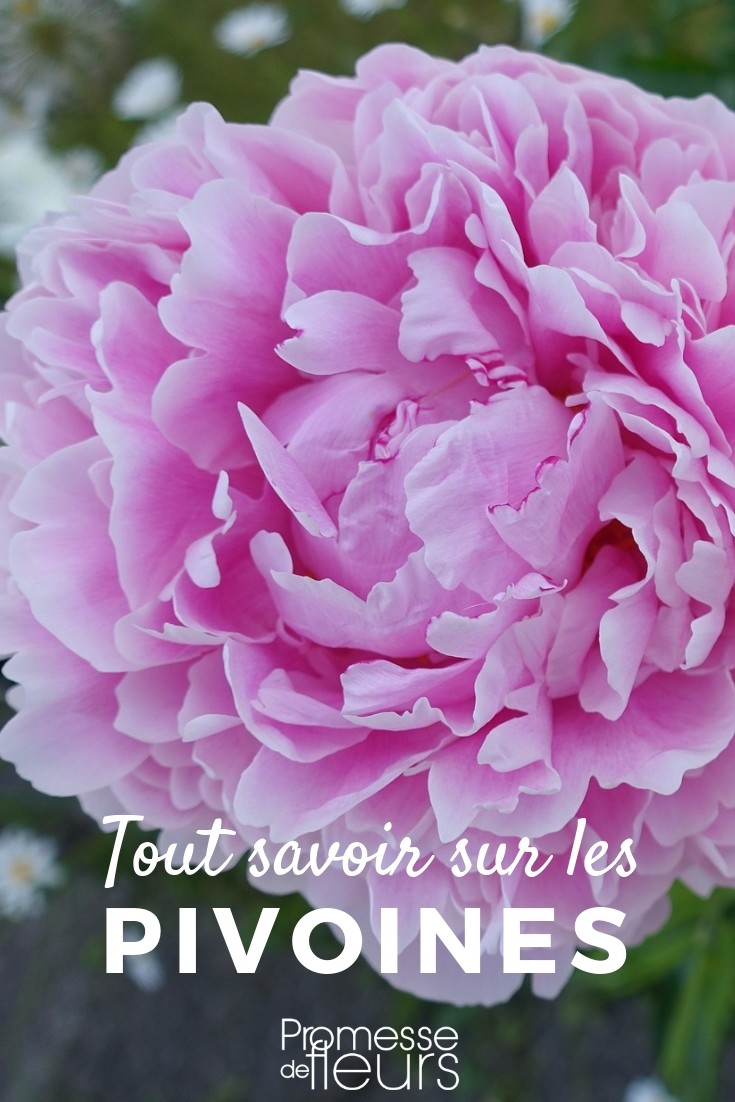
































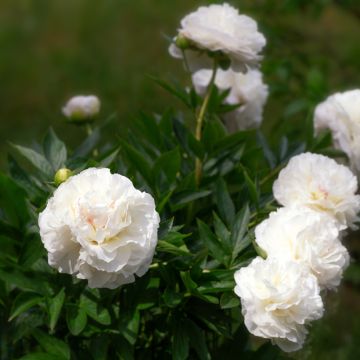
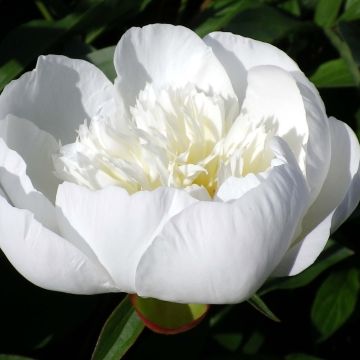
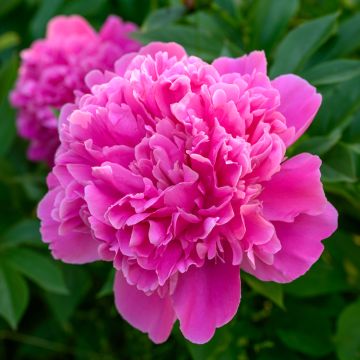

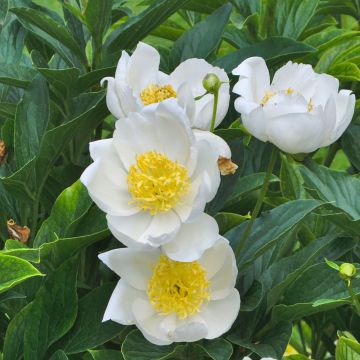
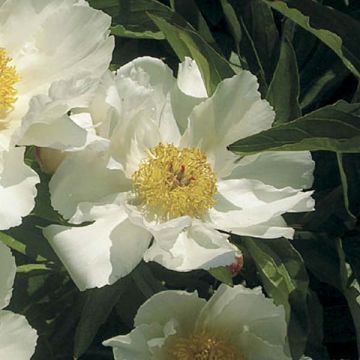
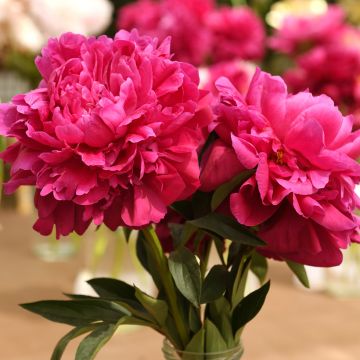
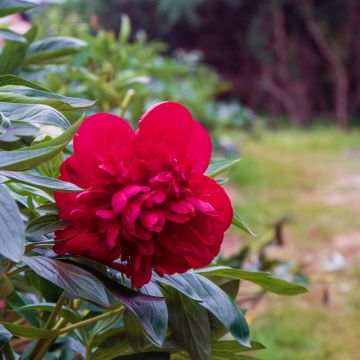
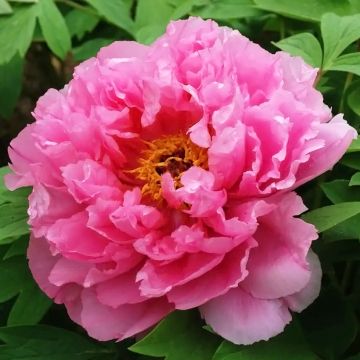
Comments